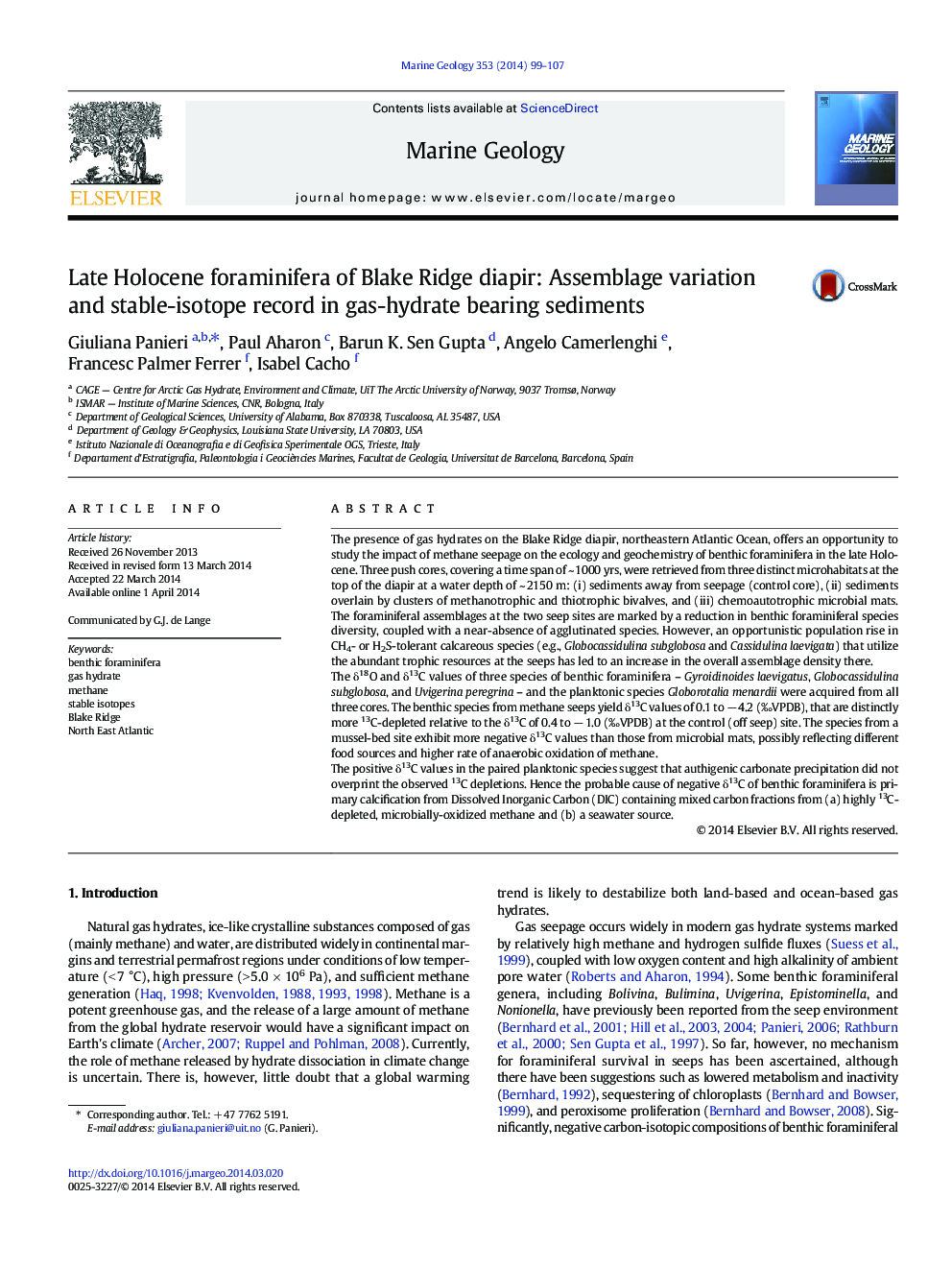| کد مقاله | کد نشریه | سال انتشار | مقاله انگلیسی | نسخه تمام متن |
|---|---|---|---|---|
| 4718297 | 1639099 | 2014 | 9 صفحه PDF | دانلود رایگان |

• Benthic species from methane seeps record δ13C negative values reflecting seepages.
• The diversity is reduced at seeps by the elimination of species intolerant to gases.
• The agglutinated group is decimated at the seeps.
The presence of gas hydrates on the Blake Ridge diapir, northeastern Atlantic Ocean, offers an opportunity to study the impact of methane seepage on the ecology and geochemistry of benthic foraminifera in the late Holocene. Three push cores, covering a time span of ~ 1000 yrs, were retrieved from three distinct microhabitats at the top of the diapir at a water depth of ~ 2150 m: (i) sediments away from seepage (control core), (ii) sediments overlain by clusters of methanotrophic and thiotrophic bivalves, and (iii) chemoautotrophic microbial mats. The foraminiferal assemblages at the two seep sites are marked by a reduction in benthic foraminiferal species diversity, coupled with a near-absence of agglutinated species. However, an opportunistic population rise in CH4- or H2S-tolerant calcareous species (e.g., Globocassidulina subglobosa and Cassidulina laevigata) that utilize the abundant trophic resources at the seeps has led to an increase in the overall assemblage density there.The δ18O and δ13C values of three species of benthic foraminifera – Gyroidinoides laevigatus, Globocassidulina subglobosa, and Uvigerina peregrina – and the planktonic species Globorotalia menardii were acquired from all three cores. The benthic species from methane seeps yield δ13C values of 0.1 to − 4.2 (‰VPDB), that are distinctly more 13C-depleted relative to the δ13C of 0.4 to − 1.0 (‰VPDB) at the control (off seep) site. The species from a mussel-bed site exhibit more negative δ13C values than those from microbial mats, possibly reflecting different food sources and higher rate of anaerobic oxidation of methane.The positive δ13C values in the paired planktonic species suggest that authigenic carbonate precipitation did not overprint the observed 13C depletions. Hence the probable cause of negative δ13C of benthic foraminifera is primary calcification from Dissolved Inorganic Carbon (DIC) containing mixed carbon fractions from (a) highly 13C-depleted, microbially-oxidized methane and (b) a seawater source.
Journal: Marine Geology - Volume 353, 1 July 2014, Pages 99–107